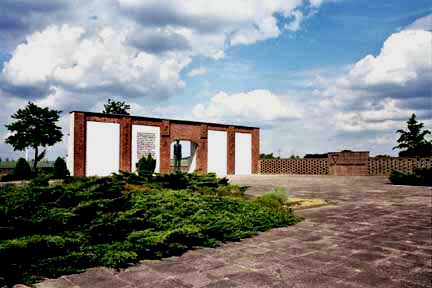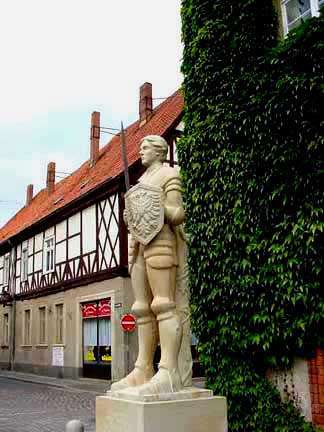An American tourist visits Gardelegen The town of Gardelegen in northeastern Germany dates back at least to the year 1241 when it was first mentioned as a town in an official document. Even before that, there was a settlement and a castle there, which were first mentioned in a document on November 23, 1196. Gardelegen is famous for two things: Garlei beer which has been exported from the town since 1450, and for a horrible crime which was committed there in the closing days of World War II when German soldiers deliberately set fire to the straw inside a brick barn and burned to death or shot down 1016 prisoners, including a few Jews, who were attempting to escape. The prisoners had been evacuated from concentration camps in the war zone in the last days of World War II. They had ended up at Gardelegen when the evacuation trains were forced to stop because the tracks had been bombed by Allied planes. In May 2002, I visited Gardelegen for the express purpose of researching this tragic event which took place on the evening of April 13, 1945. Almost 100 of the victims survived to tell the story. The American liberators of the 102nd Division, who arrived in the town late the next day, were sickened and appalled by this senseless massacre, and a week later, General Frank A. Keating ordered all the able-bodied men in the town to bury the bodies of the victims in individual graves in a military cemetery. General Keating referred to the victims as Prisoners of War, although most of them were civilian resistance fighters, or Communist political prisoners, who had been incarcerated in concentration camps or forced labor camps. General Dwight D. Eisenhower had unilaterally declared in June 1944, after the Normandy invasion, that Resistance fighters would now be considered as legal combatants instead of partisans or insurgents, and thus entitled to the protection of the Geneva Convention if captured. If not for the massacre and the gruesome photos which were published in Life Magazine on May 7, 1945, Gardelegen would probably be completely unknown to most Americans today. On April 21, 1945, the men of Gardelegen were assembled on the town square in front of the Deutches Haus restaurant. Most of them were dressed in suits and hats or what appeared to be their best clothes. They were then lined up alongside the Rathaus (town hall) and marched 5 kilometers, escorted by American tanks and armed guards, to a field near the barn where they had to dig the military-style graves. The first photograph below shows how the Rathaus (town hall) looks today and the second photograph shows the Deutches Haus which is located behind the town hall.    On my visit to Gardelegen, I did not see anyone that I identified as a fellow tourist. Few Americans ever visit the town, and almost no one today visits the military cemetery, which has been maintained for over 50 years by the citizens of Gardelegen on the orders of General Keating. For Americans, the name Gardelegen will be remembered for all time as the scene of one of the worst crimes against humanity ever committed by the Nazis. ContinueHomeThis page was last updated on March 29, 2007
|